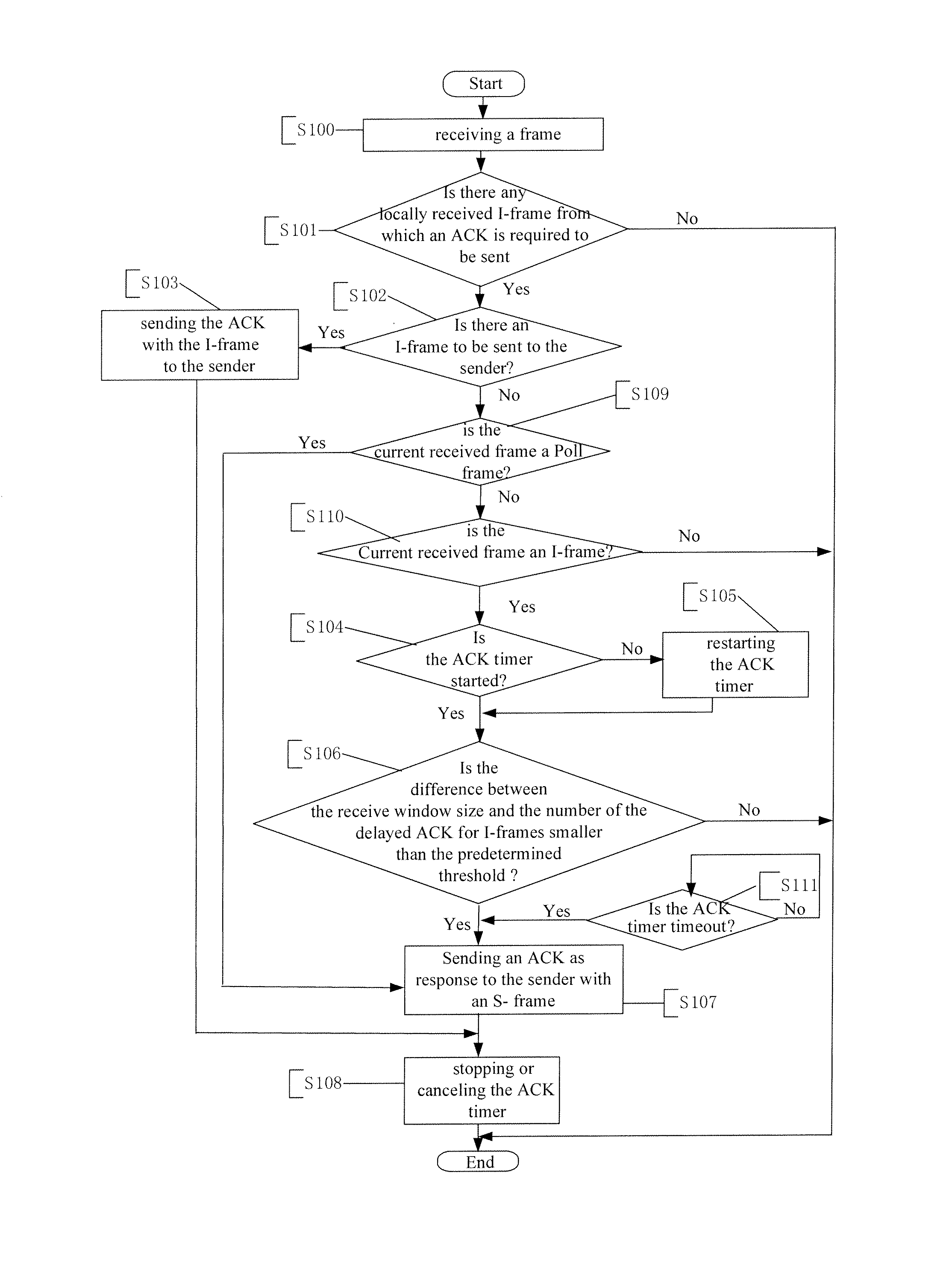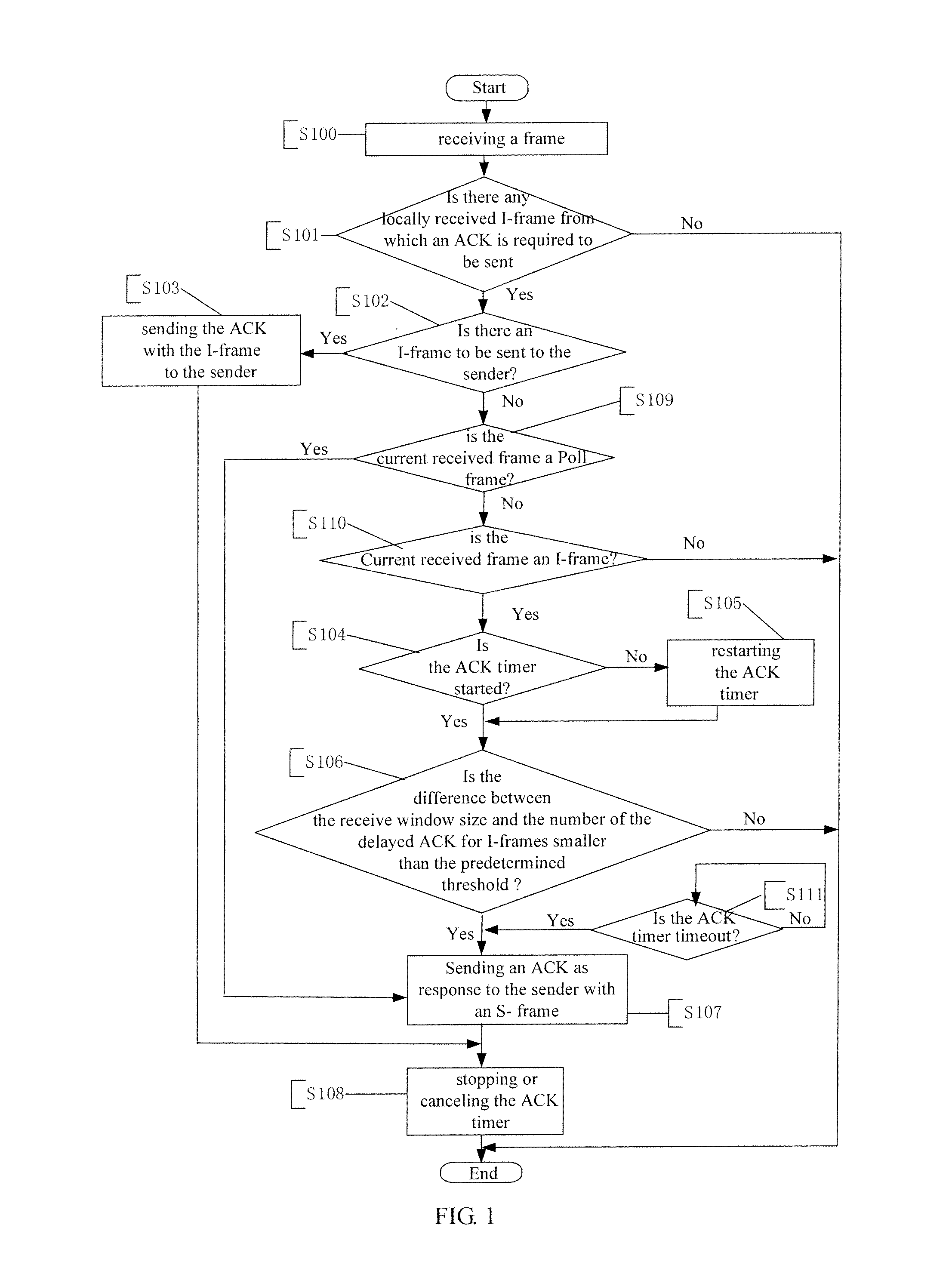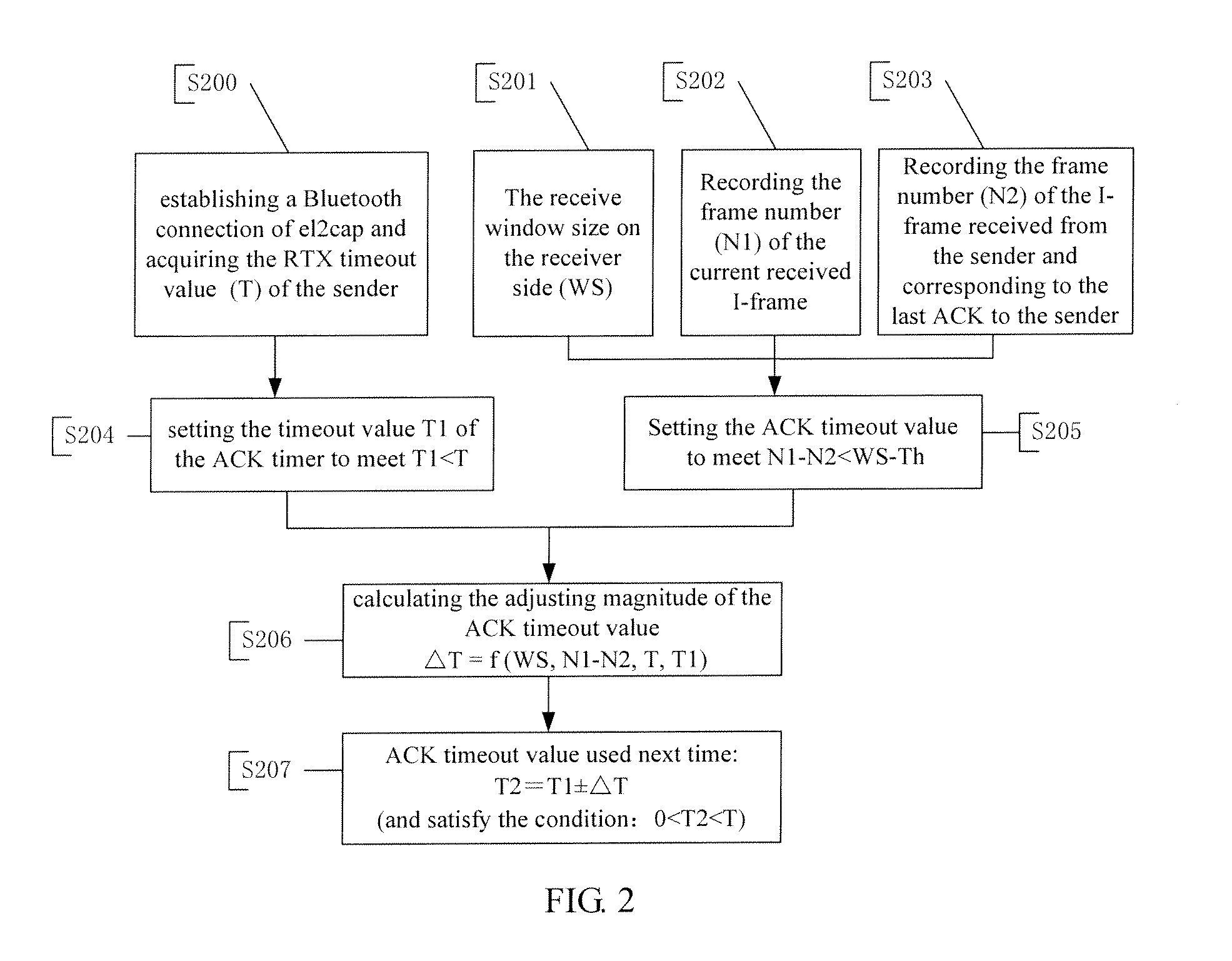[0013]1) when the ACK timer is timeout, the receiver sends an ACK to the sender actively. At this time, the sender has not sent a Poll frame to inquiry the receiving status of the receiver, which means that the ACK timeout value used next time can be further increased (the range of adjustment is a range between the current ACK timeout value and the RTX timeout value of the sender). In this way, the number of the delayed ACK for I-frames will increase by the timeout of the ACK timer, so the frequency of the S-frames sent due to the timeout of ACK timers will decrease thus reducing the transmission of S-frames.
[0015]3) when the sender sends an inquiry of “the receiving status” by a Poll frame after t waits for RTX
retransmission timeout, following the specification the receiver has to send an ACK back immediately to the sender; by that time, the ACK timer is probably not yet timeout. Since the Poll frame will
delay the transmission of the I-frame on the sender side, the ACK timeout value used next time may be set to decrease, in order to send ACK back to the sender side actively so as to decrease the inquiries of Poll frames sent by the sender side.
[0016]When the ACKs have to be sent with S-frames from the receiver, the present invention provides a preferred solution: when the receiving window at the receiver side is about to be full, or the sender side is about to send an inquiry by Poll frame due to RTX
retransmission timeout, the receiver side will send an ACK to the sender actively due to ACK timer timeout. This solution avoids the interruption of the transmission of I-frames caused by the full receiving window of the receiver or by the Poll frame sent from the sender due to RTX
retransmission timeout; this solution also reduces the transmission of S-frame by increasing the number of the delayed ACK for I-frames the most possible. Therefore, the present invention provides a method for properly controlling the sending of ACK by adjusting the ACK timeout value at the receiver side. Preferably, the ACK timeout value used next time is a function of at least one of the following: current ACK timeout value, RTX timeout value of the sender, the receive widow size of the receiver and the number of I-frames for which ACKs have not been sent.
[0017]In one embodiment of the present invention, when the receiver sends an ACK to the sender due to the timeout of the ACK timer, the larger the number of the delayed ACK for I-frames is, the less the increasing magnitude of the ACK timeout value used next time is; when the receiver sends an ACK to the sender on
receipt of the Poll frame from the sender after the RTX retransmission timeout, the larger the number of the delayed ACK for I-frames is, the less the decreasing magnitude of the ACK timeout value used next time is.
[0018]For example, when the number of the delayed ACK for I-frames is about to reach the receive widow size of the receiver, the receiver sends an ACK to the sender actively and decreases the ACK timeout value used next time; then, if, before receiving the ACK, the sender has sent a Poll frame to the receiver due to RTX retransmission timeout, the receiver has to send another ACK and decrease again the ACK timeout value used next time. To avoid adjusting of the ACK timeout value used next time over a too broad range, preferably, an average of timeout value of all started ACK timers is set, with the range of variation of the timeout
value set around the average value. For example, the range of variation is set to be 80% to 120% of the average value. If the current ACK timeout value is smaller than upper limit of the range of variation, while the calculated ACK timeout value used next time is larger than the upper limit of the range of variation, then the receiver resets the ACK timeout value used next time for it to fall within the range of variation; for example, setting the timeout value to the upper limit. If the current ACK timeout value is larger than the
lower limit of the range of variation, while the calculated ACK timeout value used next time is smaller than the
lower limit of the range of variation, the receiver resets the ACK timeout value used next time to fall within the range of variation; for example, setting the timeout value to the
lower limit. For example, the range of variation is set to be 80% to 120% of the average value; if the current ACK timeout value is larger than 80% of the average value while the calculated ACK timeout value used next time is smaller than 80% of the average value, the ACK timeout value used next time can be reset to 80% of the average value; and if the current ACK timeout value is smaller than 120% of the average value while the calculated ACK timeout value used next time is larger than 120% of the average value, the ACK timeout value used next time can be reset to 120% of the average value. In this way, the range of adjustment for the magnitude of the timeout value can be properly decreased to avoid unnecessary adjusting conflicts on the receiver side caused by the above three triggering events of sending ACK.
[0022]During the
data transmission between a sender and a receiver, the transmission condition and the data transmission speed are subjected to antenna interference,
noise interference, variation of communication distance and other factors. In the present invention, S-frames and transmission interruption can be decreased by adjusting dynamically the ACK timeout value on the receiver side to be dynamically adapted to the variation of the transmission condition, which improves the data transmission speed and
bandwidth utilization. This invention is not limited to the mere situation that both the sender and the receiver dynamically adjust the timeout value of ACK timers to improve the data transmission speed respectively; if only the ACK timer on the receiver side is adjusted, the data transmission speed can be improved as well.
 Login to View More
Login to View More  Login to View More
Login to View More 


